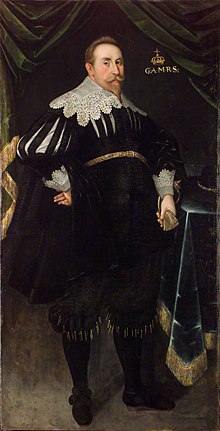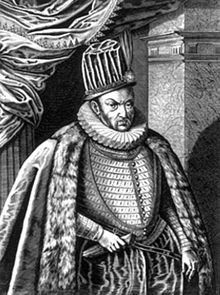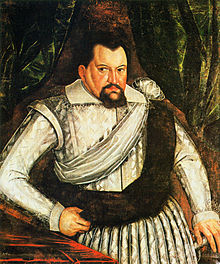After reading the novels of a song of ice and fire (game of thrones), i liked the idea of looking onto the civil wars in the Holy Roman Empire of German Nation in a similar way.
When 1618 the Empire struggeled into these cruel wars we call today "Thirty Year's War", not the "normal people" wanted this war. Also the big houses didn' t want this war, not really... But it happened. In early 17th century there were no states like today. There were mighty noble houses, with the goals of power. To get more land, more money, more power.
Every faction, with one exception, the Old Swiss Confederacy, was ruled by a noble house.
To see the mod with the view onto these houses, it could be more comprehensible to understand how and why things happened like they did.
I will present you these houses here:
1) The House of Habsburg
Coat of Arms:
Words: Bella gerant alii, tu felix Austria nube. Nam quae Mars aliis, dat tibi diva Venus
House of Habsburg and also known as House of Austria is one of the most important royal houses of Europe and is best known for being an origin of all of the formally elected Holy Roman Emperors between 1438 and 1740, as well as rulers of the Austrian Empire and Spanish Empire and several other countries. A series of dynastic marriages enabled the family to vastly expand its domains, to include Burgundy, Spain, Bohemia, Hungary, and other territories into the inheritance. In the 16th century, the family separated into the senior Habsburg Spain and the junior Habsburg Monarchy branches, who settled their mutual claims in the Oñate treaty.
The Austrian Habsburgs held the title of Holy Roman Emperor after Charles' death in 1558, as well as the Habsburg Hereditary Lands and the Kingdoms of Bohemia and Hungary.
The Spanish branch ruled over Spain, its Italian possessions and its colonial empire, the Netherlands, and, for a time (1580-1640), Portugal. Hungary was partly under Habsburg rule from 1526. For 150 years most of the country was occupied by the Ottoman Turks but these territories were re-conquered in 1683–1699.
The cousins
Ferdinand II a member of the House of Habsburg, was Holy Roman Emperor (1619–1637), King of Bohemia (1617–1619, 1620–1637), and King of Hungary (1618–1625). He was born at Graz, the son of Charles II, Archduke of Austria, and Maria Anna of Bavaria. He was educated by the Jesuits and later attended the University of Ingolstadt. With the Oñate treaty, Ferdinand obtained the support of the Spanish Habsburgs in the succession of his childless cousin Matthias, in exchange for concessions in Alsace and Italy. In 1617, he was elected King of Bohemia by the Bohemian diet, in 1618, King of Hungary by the Hungarian estates, and in 1619, Holy Roman Emperor. His devout Catholicism caused immediate turmoil in his non-Catholic subjects, especially in Bohemia. He did not wish to uphold the religious liberties granted by the Letter of Majesty conceded, signed by the previous emperor, Rudolph II, which had guaranteed the freedom of religion to the nobles and the inhabitants of the cities. Given the relatively great number of Protestants in the kingdom, including some of the nobles, the king's unpopularity soon caused the Bohemian Revolt. The Second Defenestration of Prague of 22 May 1618 is considered the first step of the Thirty Years' War. Supported by the Catholic League and the Kings of Spain and the Polish-Lithuanian Commonwealth, Ferdinand decided to reclaim his possession in Bohemia and to quench the rebels.
Philip III of Spain was King of Spain (as Philip III in Castille and Philip II in Aragon) and Portugal (Portuguese: Filipe II). A member of the House of Habsburg, Philip III was born in Madrid to King Philip II of Spain and his fourth wife and niece Anna, the daughter of the Emperor Maximilian II and Maria of Spain. Philip III later married Margaret of Austria, sister of his cousin Ferdinand II, Holy Roman Emperor. Although also known in Spain as Philip the Pious, Philip's political reputation abroad has been largely negative. For many, the decline of Spain can be dated to the economic difficulties that set in during the early years of his reign. Nonetheless, as the ruler of the Spanish Empire at its height and as the king who achieved a temporary peace with the Dutch (1609–21) and brought Spain into the Thirty Years' War (1618–48) through an (initially) extremely successful campaign, Philip's reign remains a critical period in Spanish history.
-> Faction Austria: Ferdinand II
-> Faction Spain: Philipp III
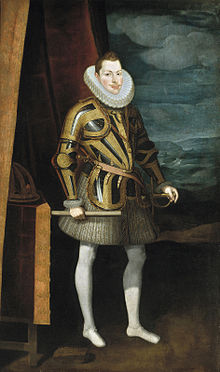






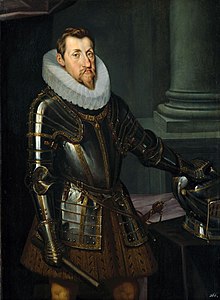

 Reply With Quote
Reply With Quote
